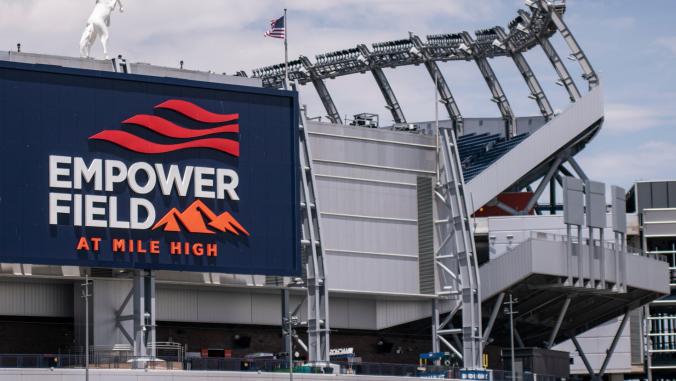Fans expect Ohio State sports to be green
Given the huge fan base and audience, the potential impacts of Ohio State’s zero waste home football games — the school is in the process of completing its third straight zero waste season — are also massive. Zero waste events are defined as diverting at least 90 percent of waste from the landfill via recycling, composting or repurposing. The Buckeyes diverted an incredible 95.2 percent of in-stadium waste in 2014.
Early indications that Ohio State’s greening efforts are breaking through with fans:
- Out of 175 fans in the tailgate areas surveyed in 2014, all but three thought that Ohio State Athletics has some level of responsibility (slight, some or strong) to add environmental efforts into their athletics operations.
- The rest of the campus is taking the green lead from Ohio State football: Diversion rates across the entire university almost have doubled since the pre-zero waste football days, rising from 16.1 percent in 2004 to 30.4 percent in the 2015 fiscal year.
- A 101 kW, 237 panel solar array was installed in 2014 on the Recreational and Physical Activities Center roof, adjacent to the Horseshoe in the Buckeyes’ iconic Block O configuration. It makes for a great aerial scene-setter shot — and a terrific talking point.
- Ohio State’s Columbus campus currently gets 21 percent of its electricity from wind. Not bad, but there is room for growth — hopefully, the university will become part of the nascent 100% Sport (#Go100Percent) movement, in which sports teams commit to getting all of their electricity needs from renewable sources.
Now it is important to note we’re not talking Seattle, Portland or Boulder here, but we might as well be. That the greening of Big State U sports is not only accepted, but expected in Columbus, Ohio is a big deal.
And the sustainability efforts of the Buckeyes is getting noticed beyond the Columbus area.
“Other universities, including athletics departments, have called to ask how we’re doing it, from the logistics to the fan engagement to the science," said Tony Gillund, Ohio State’s sustainability coordinator.
Researchers at the Ohio Agricultural Research and Development Center, an arm of Ohio State in Wooster, Ohio, worked with Quasar Energy Group, a Cleveland-based company whose mission is to produce affordable renewable energy from commercial and municipal organic biomass, and the NFL’s Cleveland Browns to turn food waste from Browns home games into biogas and nutrient-rich fertilizer.
Next Up: A greener tailgate area and Value City arena
The tailgate area just outside the stadium is the next big, green project for the Ohio State Green Team.
"In addition to the 100,000-plus fans who actually go into the stadium, there are many thousands more tailgating and hanging out in the vicinity of the stadium who don’t go into the game," said Gillund. "Our goal is to bring tailgate area recycling levels up toward parity with those inside the stadium (in 2014, 48.5 percent of in-stadium waste was recycled). The tailgate area poses some stiff challenges — it’s much less controlled than inside the stadium and we have about half the staff outside as we do inside with a much larger area to cover — but we’re still making progress."
Composting, which made up 46.7 percent of in-stadium waste last season, is not yet available in the tailgate areas, but there are plans to introduce it in the next couple of years.
Ohio State is also working to green Value City Arena (the Jerome Schottenstein Center), the 18,900-seat home of Ohio State men’s and women’s basketball, Ohio State men’s ice hockey, concerts and other entertainment events. Value City is much busier than the Horseshoe — it hosts well over 100 events per year while Ohio Stadium only hosts a fraction of that — which makes achieving Zero Waste status at the arena a more complex task, one that Ohio State is taking on gradually.
The big picture: Ohio State set for carbon neutrality by 2050
Ohio State has set an audacious, university-wide green goal for itself: Attain carbon neutrality by 2050 (PDF). Getting there will take the blocking and tackling one might expect: a cleaner and more efficient energy mix, improved energy efficiency of its buildings, significant waste reductions, cleaner travel and commuting options and buy-in from all stakeholders. That the Buckeyes are already leading makes me think Ohio State will reach its goal ahead of schedule.






